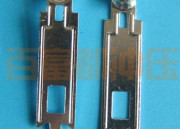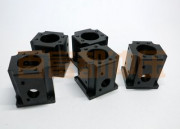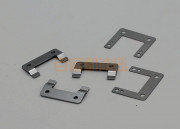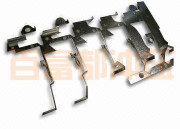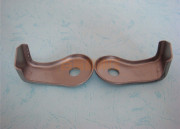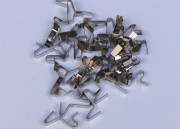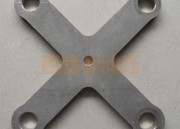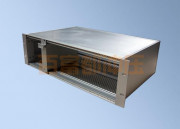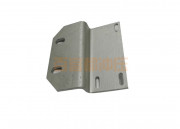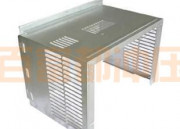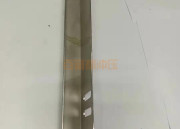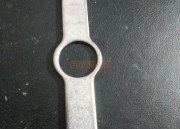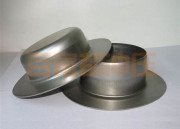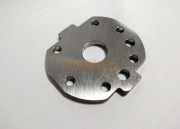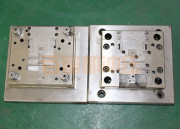Posted at 24/08/2022 By : deep drawing Categories : Blog,Industry Comment: Comments Off on What are the precautions in the processing of metal stamping parts? 1. Attention should be paid to processing metal stamping parts
1. Cracking at the bottom of the part: The main reason for the cracking at the bottom of the part is that the plasticity of the material is poor or the blank holder of the mold is pressed too tightly. The preventive measure is to replace the material with better shaping or loosen the blank holder.
2. Wrinkles on the side walls of the parts: The main reasons for the wrinkles on the side walls of the parts are the insufficient thickness of the material (thinner than the small allowable thickness) or the eccentricity when the upper and lower molds are installed, resulting in a gap on one side If it is too large, the gap on the other side is too small. The preventive measure is to replace the material in time and readjust the mold.
3. Scratches on stamping parts: The main reason for scratches on parts is that there are sharp scars on the mold or metal dust falls into the mold. The preventive measures are to grind the scars on the mold and clean the metal dust.
2. Employees should pay attention to their own operating procedures in the process of stamping parts processing
1. It is strictly forbidden to wear slippers when going to work, so as not to hit the feet with molds and iron blocks in the workshop. Squad leaders, fitters and mold repairers must wear safety shoes when going to work.
2. At work, first check whether the equipment is running abnormally, such as single, unclear continuous flushing, poor operation or electrical failure, immediately stop the machine, and promptly find a technician on duty to deal with it.
3. Check the equipment according to the inspection content on the equipment inspection card, pay special attention to whether the guide and braking device of the punch press are in normal operation, and the functions of single punch and continuous punch are clear.
4. It is strictly forbidden for operators and mold maintenance personnel to put their hands into the mold for operation.
5. Any flammable and explosive items cannot be stored under the switch.
6. When installing the suction fan, the operator is strictly forbidden to put his hand on the motor to clean up the waste.
7. Cut off the power supply, clean and scrub the work surface, remove the mold for maintenance and storage, and check the oil in the lubrication system at certain times every week.
8. Male operators are strictly prohibited from having long hair, and female operators should roll up their long hair to prevent the hair from getting caught in the flywheel.
9. It is strictly forbidden to wear gloves when drilling and milling machines; when using the grinding machine, wear masks and goggles to protect yourself.
10. Pay attention to fire prevention of other oils such as white oil, alcohol, cleaning agent, etc.
11. When there is oil, clean it up in time to avoid slipping.
12. Special tools (pliers, hooks) must be used when laying out or manually feeding and taking out blanks individually. It is strictly forbidden to feed and take blanks by hand. One switch will hurt your hand, you need a double switch. The machine must not leak oil, otherwise it will fall off. Do not expose the power supply, it is dangerous.
13. Gloves should be worn when packing materials, leftovers and molds to avoid scratching hands.
14. Pay attention to dragging the mold to prevent it from falling on the ground (the flatbed truck must be lowered to pull the mold).
15. The operator needs to wear earplugs.
16. When a new employee goes to work on the first day, the team leader must explain the safety operation rules to him, and learn the safety operation rules once a week.
17. It is strictly forbidden to blow the air gun at people, it is easy to hurt the eyes.
18. When adjusting the machine, the machine must be adjusted to single action, and it is strictly forbidden to move the discharge belt.
19. Operators are strictly prohibited from chasing and beating in the workshop, so as to avoid falling, knocking over the product or hurting themselves.
20. When installing the mold on the small punch, first loosen the locking device of the guide rail, install the upper and lower molds, and then adjust the stroke of the guide rail until the requirements are met and the fastening device is locked. In addition, a single stroke must be performed when the high punch is set up in the mold. After locking the upper mold, the oil pressure locks the mold and then locks the lower mold, and check again before production.
21. It is strictly forbidden for non-electricians to connect and repair the machine.
22. Wear gloves and pay attention when stamping iron sheets, otherwise it will hurt your hands.
23. It is strictly forbidden to use the foot switch on the punch, and all the original equipment of the machine are removed.
24. When the machine is found to be abnormal, turn off the power first, and then find the technician on duty to deal with it in time.
25. When cleaning and checking the equipment, the power must be cut off before operation.
26. Check whether various equipment and materials are ready.
Read More →

